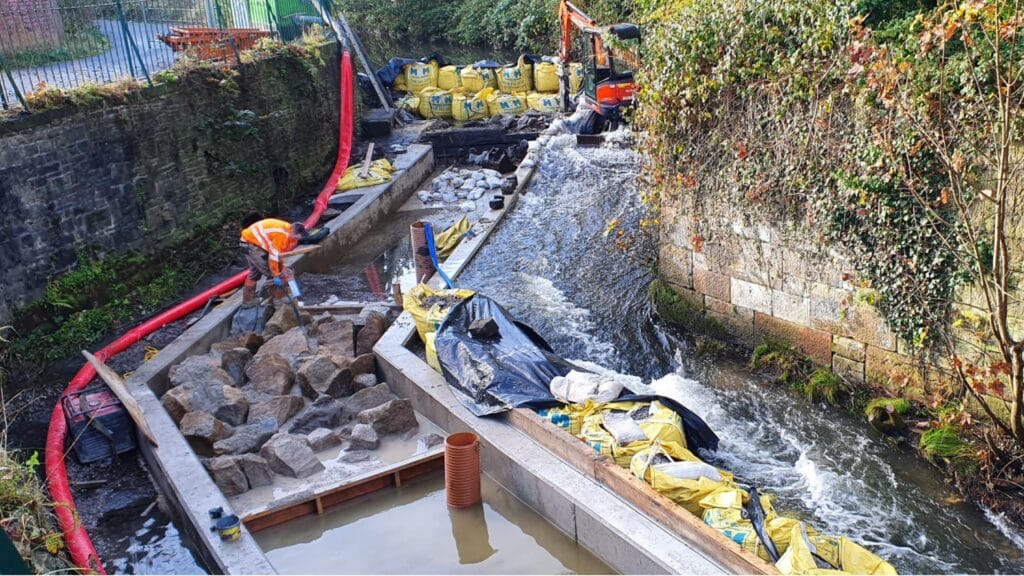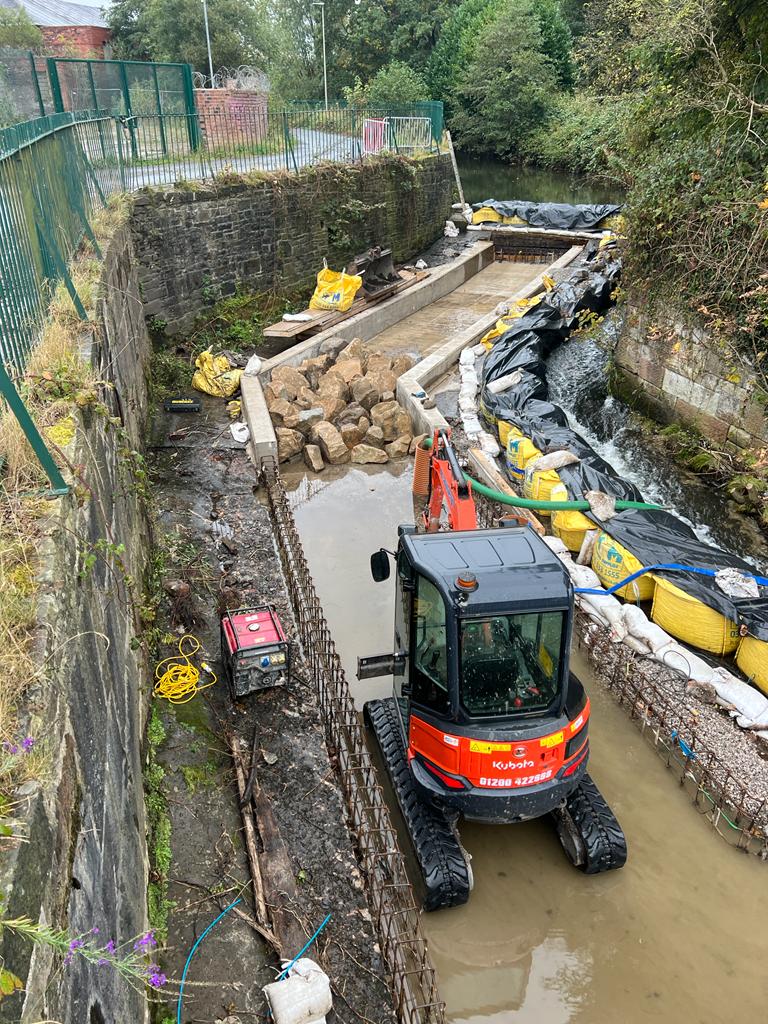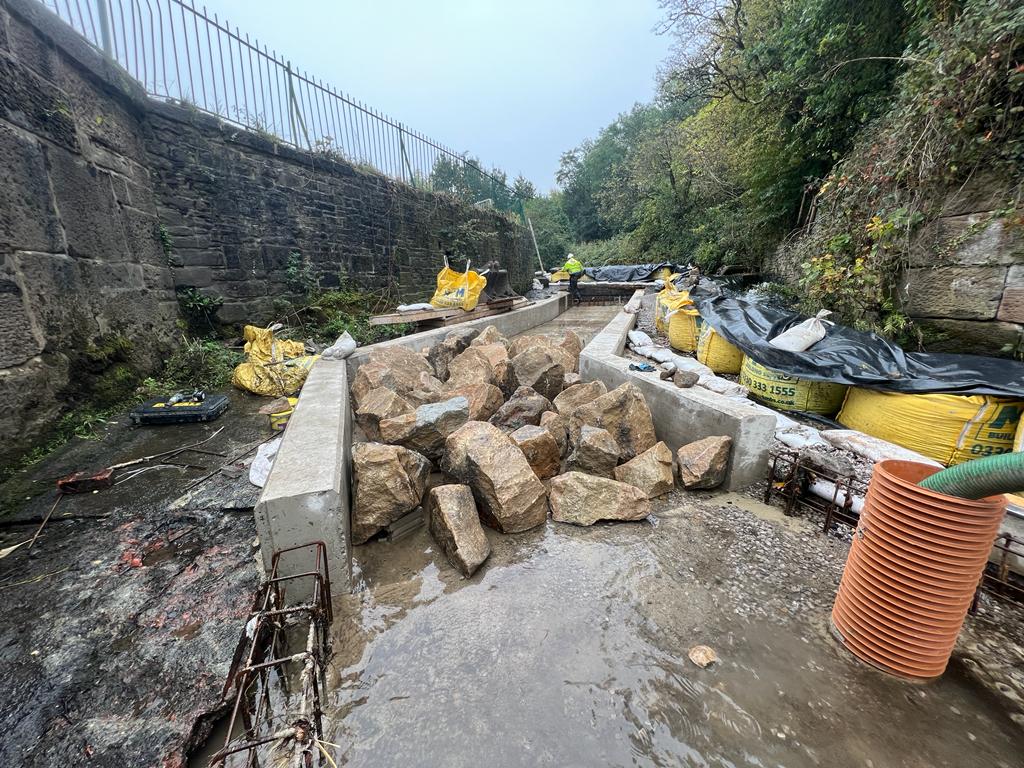Pottery Terrace is one of eight fish passes that are being created by Ribble Rivers Trust as part of the Our Douglas project.

Due to Lancashire’s industrial history many of the rivers in this area have been heavily modified. The main reason for this was to provide waterpower for cotton mills and calico works. Of course, this type of industry doesn’t exist anymore. However, the weirs do! They remain as a reminder of Lancashire’s industrial heritage, but they’re stopping our rivers from moving forward and improving. Now, these structures continue to pose a barrier to the movement of fish.
Using our extensive data and evidence base Ribble Rivers Trust first carried out a barrier prioritisation and feasibility study. This helped us to identify the eight worst offending weirs that, if addressed, would provide the most benefit to the wider river systems. In total these improvements will open up 130 km of river habitat in the Douglas River catchment.
What’s the problem with Pottery Terrace?

Pottery Terrace Weir lies in a walled and concrete lined channel. Here the river is sandwiched between Eckersley Mill and Swan Meadow Industrial Estate on the right-hand bank and several allotments and Parson’s Meadow on the left-hand bank.
It’s not clear when the weir was created, but it appears on maps as far back as 1909. What we do know is that it was built to supply water and power to the Eckersley Mill complex.
So, what are you doing to help?
Because this river is in a built-up area it wasn’t possible to remove it without undermining the walls of the channel. So, instead we designed a rock ramp fish pass. Once again, we teamed up with a local contractor, Bailey Contracts, who delivered the work.
Did you know?
Perturbation boulders are a great way of improving fish passability on steeper weirs. By adding boulders to the channel, we can replicate a more natural river and change the flow of the water. This means that, instead of a steady stream of water, there is a mix of fast and slow flows, as well as rest areas between boulders which fish can rest in.
Pottery Terrace fish pass has been designed to mimic a natural river. A more natural gradient and river structure is being created thanks to a combination of riverbed reprofiling and perturbation boulders. This helps fish such as Atlantic salmon and brown trout move up the weir to upstream areas. Here they can access new breeding and feeding habitats along the river Douglas.
This is really important as many fish species are in decline. If we can help them to reach their breeding grounds and successfully reproduce, we should see an increase in fish numbers. As fish numbers recover, we should also see an increase in wider biodiversity including species such as otters and kingfishers who will take advantage of the new food source.
What happens next?

As with all our projects, we’ll be closely monitoring the site. Before and after data is collected, which will help us to see how successful this project is. Some of the things we typically collect information about are fish numbers and diversity and invertebrate numbers and diversity. By comparing this data, we can see how species are moving around rivers, and if they are using our fish passes.
The project has been delivered by Ribble Rivers Trust, with funding from Ministry for Housing Communities and Local Government, through the European Regional Development Fund and help from our partner Groundwork CLM.

